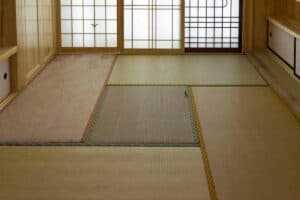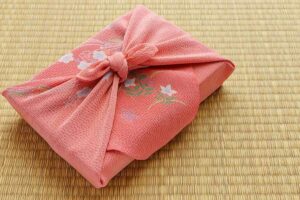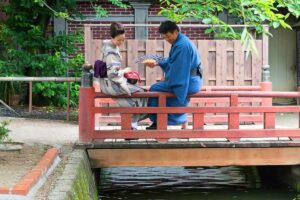The thought of overwatering a plant is inconceivable to many people.
After all, water is vital to plant development. So, how can it be harmful?
How much is enough?
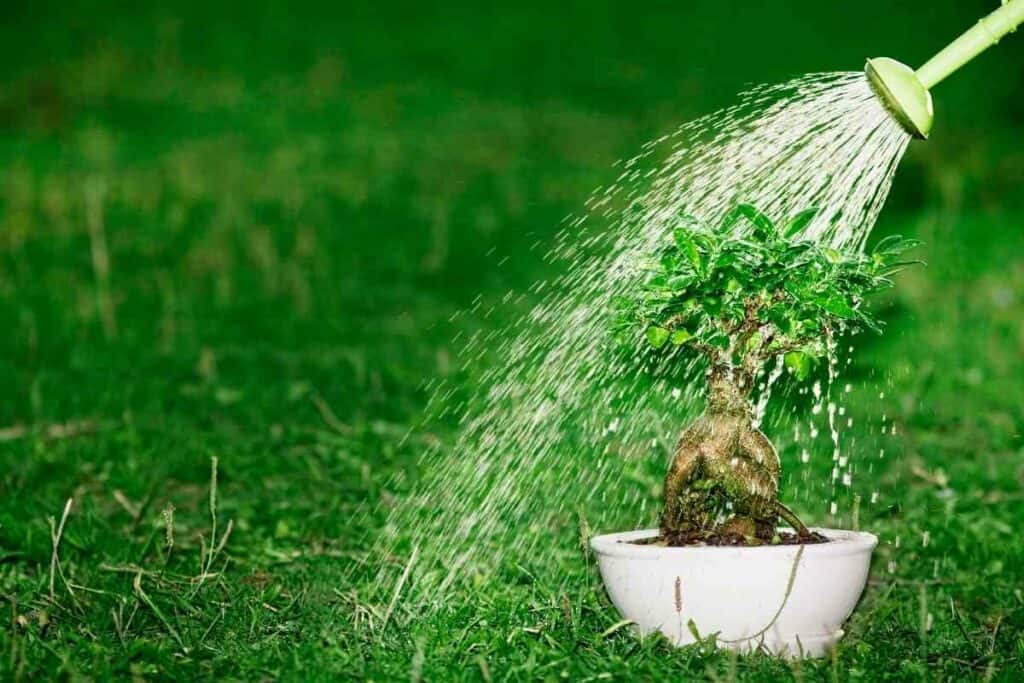
Water is only helpful if it doesn’t exceed a particular level.
Overwatering a bonsai plant hurts it, and in worst-case scenarios, it can kill the plant.
Table of Contents
What causes overwatering?
The main causes of overwatering are:
- rainwater
- poor soil drainage
- and applying too much water to potted plants
If you live in an area that experiences excessive rain, your bonsai plants are at a high risk of overwatering.
This is because too much rainwater overwhelms the growth medium, so it can’t absorb more water. As a result, it gets waterlogged, leading to overwatering.
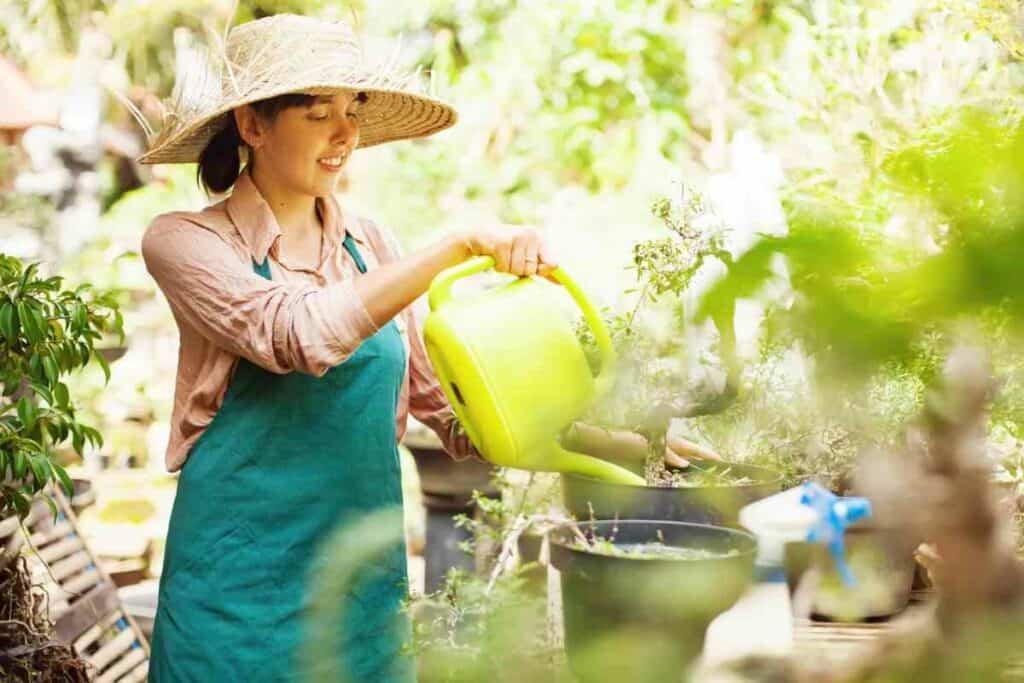
The second cause of overwatering is poor soil drainage, which mainly affects clay soils. Unlike sand, clay has tiny, fine particles.
Therefore, it doesn’t allow water to penetrate the lower strata, resulting in waterlogging.
Lastly – Watering your plants too frequently causes overwatering. Even if your area has well-drained soil, it can only absorb water to a certain level.
If you overdo it, it becomes overwhelming, and your plants feel the impact.
What are the signs of overwatering a bonsai tree?
Here are the common signs you give your bonsai plant too much water.
Moist soil
The most obvious sign of overwatering is soil moisture.
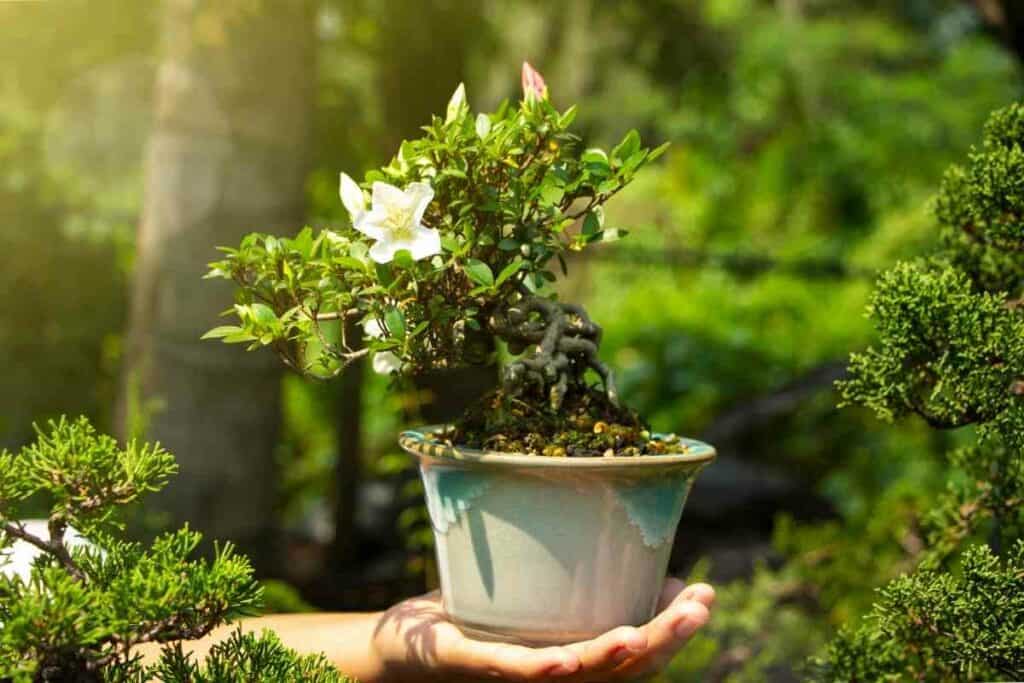
If the topsoil feels wet or has small water bubbles, it’s time to cut down on watering. To avoid problems, water your bonsai tree when the topsoil feels and appears dry.
If the soil remains moist for more than three days without rain, consider looking at the growing pot.
From Experience – Waterlogging usually occurs when the pot lacks drainage holes, or the existing ones are blocked. The solution to this is adding more openings and unclogging the blocked ones.
Underwatering your plant might sometimes prompt overwatering, especially if the tree starts wilting.
This overcompensation for missed watering sessions makes the soil damp. It’s advisable to set a schedule to avoid such problems.
Yellowing leaves
Like underwatering, overwatering causes yellowing leaves, and too much water in the soil suffocates the plants’ roots and impedes nutrient absorption.
A lack of vital nutrients results in yellow leaves.
Plant roots need oxygen and other nutrients to function correctly despite their location. Without adequate oxygen, your bonsai tree won’t absorb nutrients.
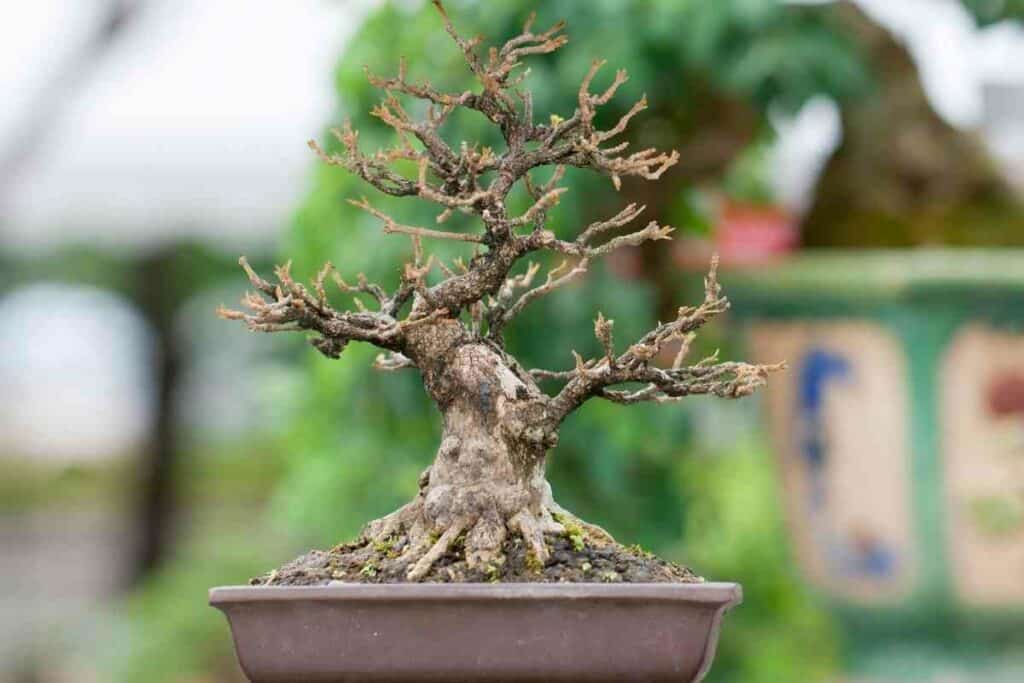
A lack of nutrients initially manifests itself as wilting and yellowing leaves. Over time, it can kill your plant.
Withered branches
Overwatering your bonsai tree causes shriveling of secondary and tertiary branches.
Remember – Too much water stresses your plant, rendering it incapable of passing nutrients to the smaller branches.
If you don’t stop overwatering, the branches continue shriveling. This might continue until the branches die.
Moulds and Mosses
Another adverse effect of overwatering your bonsai is increased susceptibility to mould infection.
Mould thrives in moist conditions. Over time, mould causes rotting and creates suitable conditions for insect infestation.
Like moulds, mosses flourish in moist conditions. Mosses like sphagnum moss are useful because they get water to the plant and add to its beauty.
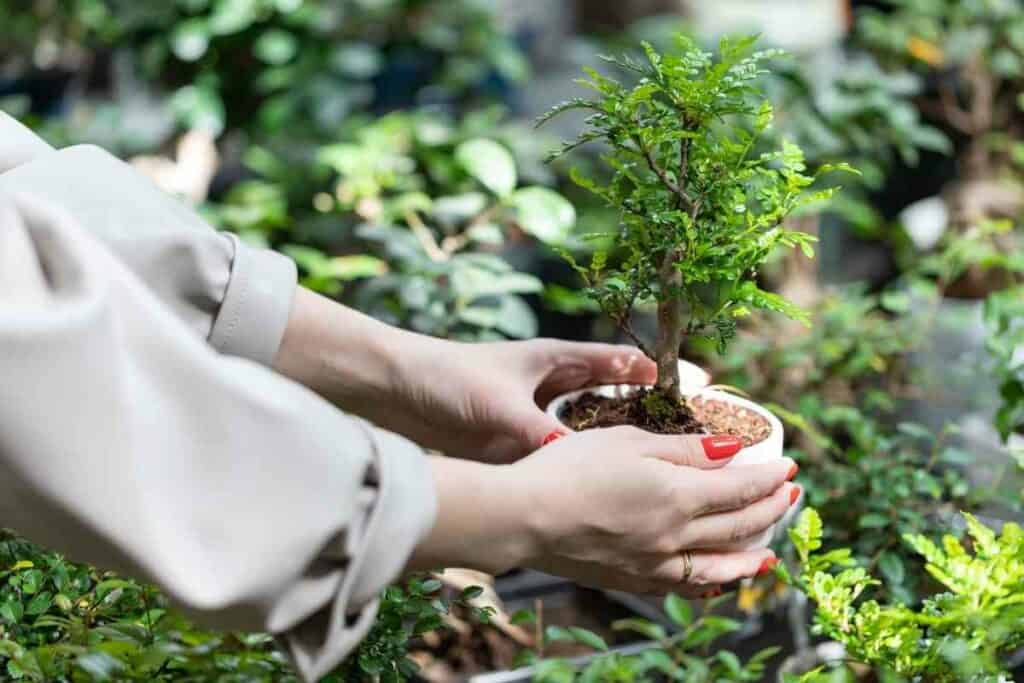
However, if you notice strange mosses that you didn’t plant on your bonsai tree, it’s probably a result of overwatering.
A single moss plant can hold up to eight times its weight.
Consequently – A moss infestation can worsen the problems caused by overwatering your bonsai tree. To avoid such issues, remove mosses whenever you see them.
Root rot
Root rot is arguably the worst problem caused by overwatering your plants.
As mentioned earlier, roots need aeration to absorb nutrients from the soil.
Unfortunately, too much water suffocates the roots by preventing aeration.
As a result, the roots start rotting, eventually killing the entire plant.
Remedies for Overwatering Bonsai Trees
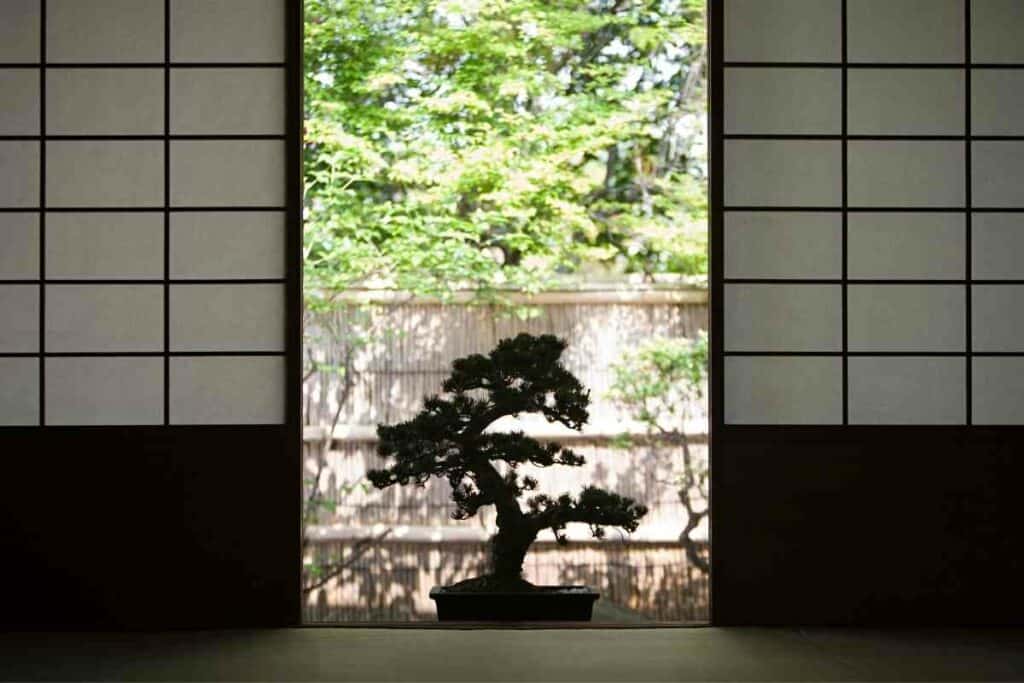
If your plant shows any symptoms of overwatering, here are the steps to save it from dying.
Check root health and repot
Since most bonsai plants grow in pots, it’s quite easy to check their roots.
Remove the plant from its container and shake off the soil. Remove the roots if they are brown and mushy and produce an unpleasant smell.
You can only report the plant once it has healthy roots. It’s advisable to use a new container.
Remove infected parts
After repotting, examine the plant’s leaves and branches.
Remove all yellow and brown leaves and wilted branches.
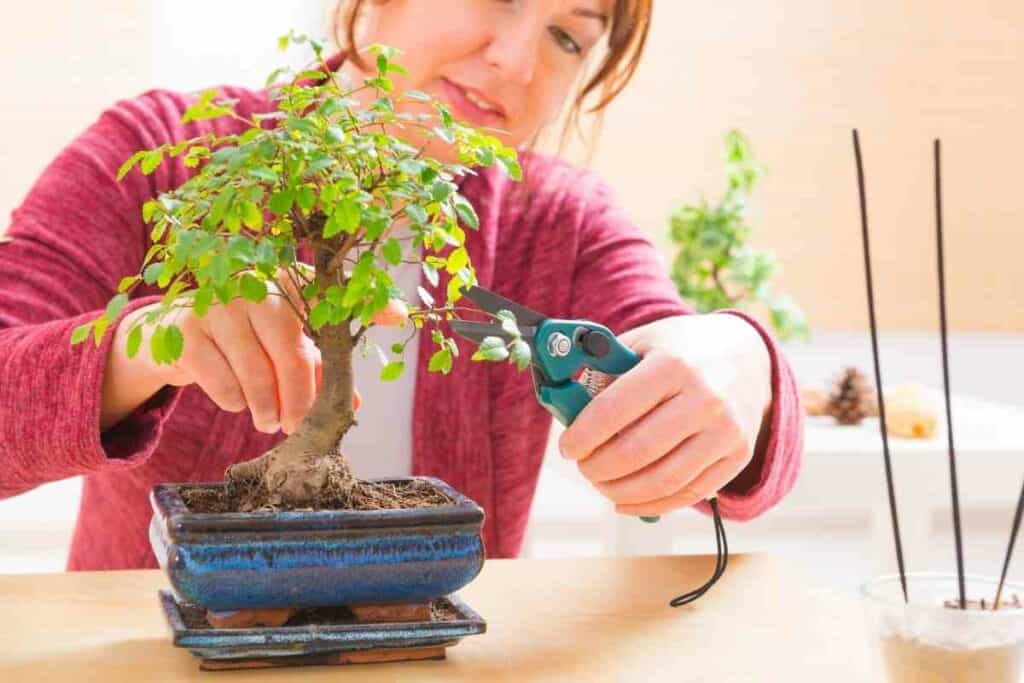
It also helps to cut the topmost bud in the tree, reducing stress during recovery.
Once the unhealthy leaves and branches are out, rinse the tree with water. Then, water it with cold chamomile tea.
Works Well – Chamomile tea is a DIY antifungal agent that protects your plant against future infections.
Next, take your tree outside. Place it in an open area with a lot of direct sunlight.
Once the topsoil dries, apply little water. You can then establish a watering schedule.
Observe watering frequency
The best remedy for overwatering is observing your watering frequency.
Water the tree when the soil is slightly dry.
If you can’t tell using your eyes, dip your fingers ½” into the ground to feel it. If it’s dry, water the plant.
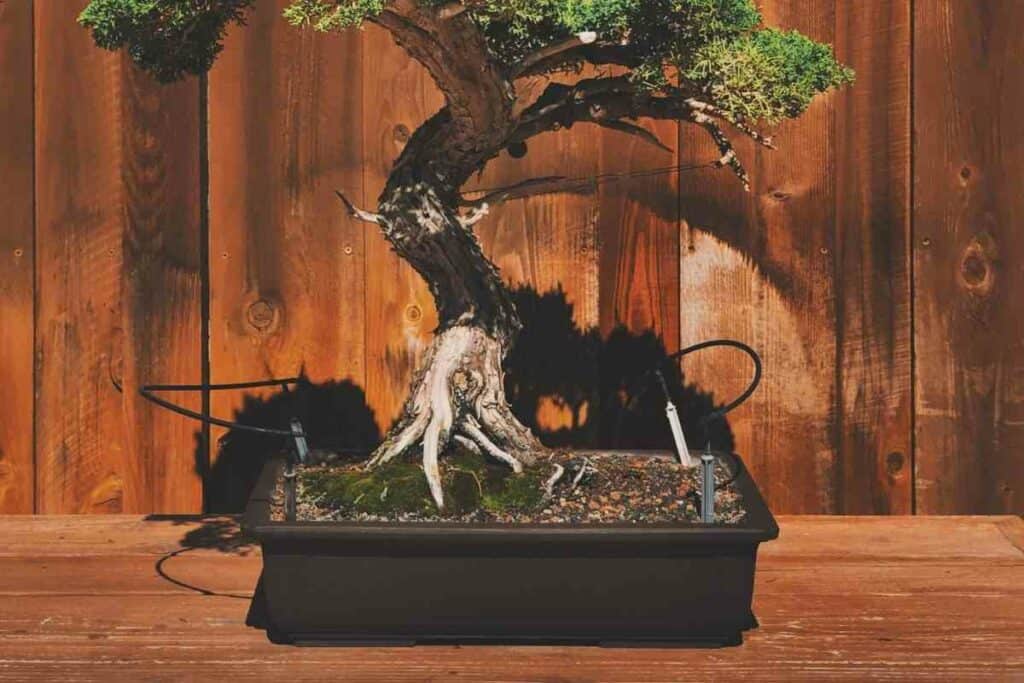
Otherwise, let it sit for another few days. After doing this repeatedly, you’ll not need to feel it – an eye test will suffice.
Heads Up! Always evaluate your trees individually to see which ones need watering. Never water them as a group, as this often leads to overwatering.
If the soil is dry and your plants need water, ensure the water soaks the entire root structure.
Keep watering until water comes out of the planter’s drainage holes. Repeat the process after a few minutes, but ensure the soil doesn’t become soggy.
Final Thoughts
The frequency of watering your bonsai plant depends on species, climate, and tree size.
Nevertheless, you can check if your plant needs water by feeling the soil – if it’s dry and coarse, water. Otherwise, wait. For a more accurate measurement, use a moisture meter.
Remember, both underwatering and overwatering can kill your plant. Always look out for the symptoms and act promptly whenever you notice them.
More importantly, provide a well-draining growth medium for your tree, as it’s the best way to avoid problems.
- 7 Best Japanese Sunscreen Products You Can Buy Online
- 5 Best Japanese Makeup Brushes for a Flawless Finish
- 7 Benefits Of Tatami Mats You Should Know
- The Best Furoshiki Wrapping Cloths: Inspiration, Ideas & Cloths You Can Buy
- Cool Tenugui Towels (10 Best Ones with Bold Japanese designs)
- Japanese Yukata Ideas & Inspiration (20 Creative Ideas)



